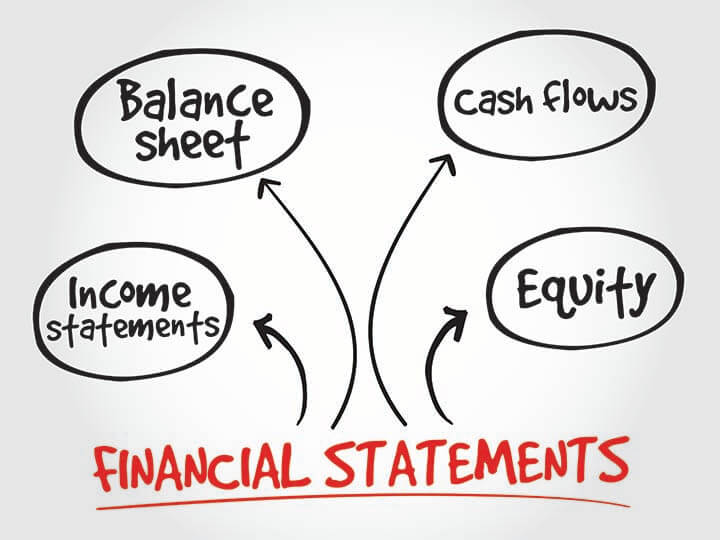4 types of financial statements that every business needs
Whether you're looking for investors for your business or want to apply for credit, you'll find that producing four types of financial statements can help you.
Find out more about Business Accounting with LZ Books
Excellent


by Belle Wong, J.D.
Belle Wong, is a freelance writer specializing in small business, personal finance, banking, and tech/SAAS. She ...
Contents
Updated on: January 6, 2023 · 3min read
- Understanding financial statements
- 1. Balance sheet
- 2. Income statement
- 3. Cash flow statement
- 4. Statement of owner's equity
If you're a small business owner, you may be thinking that your accountant is the only person who could possibly be interested in your business's financial statements.
But if you're looking for investors for your business, or want to apply for credit, you'll find that four types of financial statements—the balance sheet, the income statement, the cash flow statement, and the statement of owner's equity—can be crucial in helping you meet your financing goals.

Understanding financial statements
It's important for the small business owner to understand these four types of financial statements and the information they provide for the investor or creditor interested in providing funds for your business.
Both individually and taken together, these financial statements give a potential investor or creditor a wealth of information and can have a serious impact on your business's ability to obtain the funds or financing it needs.
1. Balance sheet
Also known as a statement of financial position, or a statement of net worth, the balance sheet is one of the four important financial statements every business needs.
Based on the basic accounting equation, or balance sheet equation [Assets = Liabilities + Equity], the balance sheet provides a snapshot of a business's assets, liabilities, and equity.
It also provides users with a look at the business's financial position at a specific point in time, and financial statement analysts use the information it contains to calculate several important financial ratios.
2. Income statement
The income statement is another important financial statement for your small business. It provides users with a picture of the business's financial performance over a specific period of time.
Also known as a statement of revenue and expense, or a profit and loss statement (P&L), the income statement is a statement of earnings that shows a business's operating and nonoperating revenue and expenses.
Like the balance sheet, the information contained in an income statement is used in financial statement analysis to calculate financial ratios that provide users with further insight into a business's financial performance.
3. Cash flow statement
The cash flow statement, also known as a statement of cash flows, or a statement of changes in financial position, is an important financial statement that gives users an understanding of how well a business is managing its cash flow.
Using the information in a cash flow statement, users are able to see whether a business is generating sufficient cash to meet both its debt obligations and its operating expenses.
The typical cash flow statement format provides information about a business's cash from operating activities, cash from investing activities, and cash from financing activities.
4. Statement of owner's equity
The fourth financial statement that a business needs is a statement of owner's equity, also known as a statement of changes in equity, or a statement of shareholders' equity.
It shows the business's retained earnings—the profit kept, or retained, within a business rather than distributed to owners or shareholders—both at the beginning and at the end of a specific reporting period.
Retained earnings are often used to either reinvest in the company, or to pay off the business's debt obligations. It provides users with information regarding the financial health of a business, as it shows whether the business is capable of meeting ongoing financial and operating obligations without requiring its owners to contribute more capital.
By preparing each of these financial statements, not only will you be able to provide a prospective investor or creditor with important information that they need to assess your business, but also you will be able to identify trends in your business's performance that will help you to position your business for continued success.
You can work with your accounting professionals or engage an online service provider to help ensure that your business is compliant with its reporting and obligations throughout the year.
You may also like
 Trademarks
TrademarksWhy do I need to conduct a trademark search?
By knowing what other trademarks are out there, you will understand if there is room for the mark that you want to protect. It is better to find out early, so you can find a mark that will be easier to protect.
October 4, 2023 · 4min read
 Starting Your LLC
Starting Your LLCHow to get an LLC and start a limited liability company
Considering an LLC for your business? The application process isn't complicated, but to apply for an LLC, you'll have to do some homework first.
March 21, 2024 · 11min read
 Starting Your LLC
Starting Your LLCHow to start an LLC in 7 steps: A complete guide for 2024
It's easy to create a new LLC by filing paperwork with the state. But to set yourself up for success, you'll also need to think about your business name, finances, an operating agreement, and licenses and permits. Here's a step-by-step guide.
March 21, 2024 · 20min read